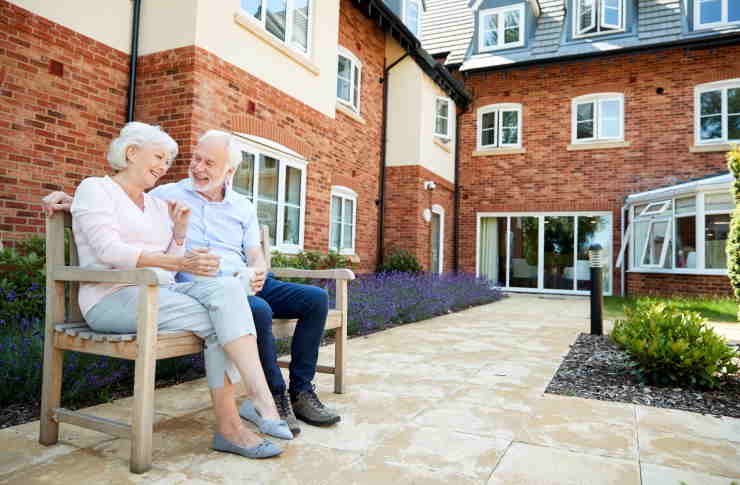The Cottage Revolution: Reinventing Senior Living with Comfort and Community
The world of senior living is undergoing a transformation, with cottage-style homes emerging as a popular alternative to traditional retirement communities. This innovative approach combines the independence of homeownership with the support and amenities of senior living facilities. Let's explore how cottage living is reshaping the golden years for many seniors.

What are the key benefits of cottage living for seniors?
Cottage living offers seniors a unique blend of independence and community. Unlike large retirement complexes, cottage communities provide individual homes within a close-knit neighborhood setting. This arrangement allows seniors to maintain their privacy and autonomy while still having easy access to social interactions and support services.
One of the most significant advantages is the sense of belonging that cottage communities foster. Residents can enjoy their own space while participating in community activities, shared gardens, or social clubs. This balance helps combat loneliness and isolation, which are common concerns for older adults.
How do cottage-style homes support aging in place?
Cottage-style homes are designed with aging in place in mind, incorporating accessible features that adapt to changing needs over time. These homes often include single-story layouts, wide doorways, and zero-step entrances to accommodate mobility aids. Bathrooms are equipped with grab bars and walk-in showers, while kitchens feature lowered countertops and easy-to-reach appliances.
Smart home technology is frequently integrated into these cottages, allowing for remote monitoring of health and safety. Features like motion sensors, automated lighting, and voice-controlled devices can enhance independence and provide peace of mind for both seniors and their families.
How do costs and amenities compare between senior cottages and traditional retirement homes?
When comparing senior cottages to traditional retirement homes, several factors come into play. Cottage living often provides a more home-like environment with greater privacy and space. Residents typically have their own yard and the ability to personalize their living space, which isn’t always possible in apartment-style retirement communities.
In terms of costs, senior cottages can be more economical in the long run, especially for couples. While initial buy-in costs may be higher, monthly fees are often lower than those of traditional retirement homes, as residents are responsible for their own home maintenance.
| Type of Senior Living | Average Monthly Cost | Typical Amenities |
|---|---|---|
| Senior Cottage | $2,500 - $4,000 | Private home, yard, community center, optional meal plans |
| Traditional Retirement Home | $3,500 - $6,000 | Shared spaces, dining services, on-site healthcare |
| Assisted Living Facility | $4,000 - $7,000 | 24/7 care, meals, housekeeping, medical assistance |
Prices, rates, or cost estimates mentioned in this article are based on the latest available information but may change over time. Independent research is advised before making financial decisions.
What are the key considerations when choosing a senior cottage community?
Selecting the right senior cottage community involves careful evaluation of several factors. Location is paramount – consider proximity to family, healthcare facilities, and amenities like shopping and entertainment. The range of services offered is also crucial, from basic maintenance to more comprehensive care options as needs change.
Community culture and social opportunities should align with personal interests and lifestyle preferences. It’s important to visit multiple communities, talk to current residents, and participate in activities to get a feel for the social atmosphere.
What are the trending cottage designs that combine charm, functionality, and senior-friendly layouts?
Modern senior cottage designs are moving away from the institutional look, embracing charming exteriors that blend with residential neighborhoods. Open floor plans are popular, creating spacious living areas that are easy to navigate. Large windows and skylights are incorporated to maximize natural light, which can improve mood and cognitive function in older adults.
Outdoor living spaces like covered patios and sunrooms are becoming standard features, allowing residents to enjoy nature without excessive exposure to the elements. Many designs also include flex spaces that can be used as guest rooms or home offices, accommodating visiting family or personal interests.
How do senior cottage communities promote active and engaged lifestyles?
Senior cottage communities are designed to encourage active and engaged lifestyles through a variety of amenities and programs. Walking trails, community gardens, and fitness centers are common features that promote physical activity. Many communities offer classes and workshops ranging from art and crafts to technology skills, keeping residents mentally stimulated and socially connected.
Some innovative communities are partnering with local universities to offer lifelong learning programs, allowing residents to audit classes or participate in lectures. Volunteer opportunities within the community and in the surrounding area are often facilitated, giving seniors a sense of purpose and connection to the broader community.
In conclusion, senior cottage living represents a significant shift in the approach to aging, offering a blend of independence, community, and adaptability. As the baby boomer generation continues to redefine retirement, cottage communities are poised to play an increasingly important role in senior living options. By combining the comforts of home with the support of a caring community, these innovative living arrangements are helping seniors maintain their quality of life and independence well into their golden years.




